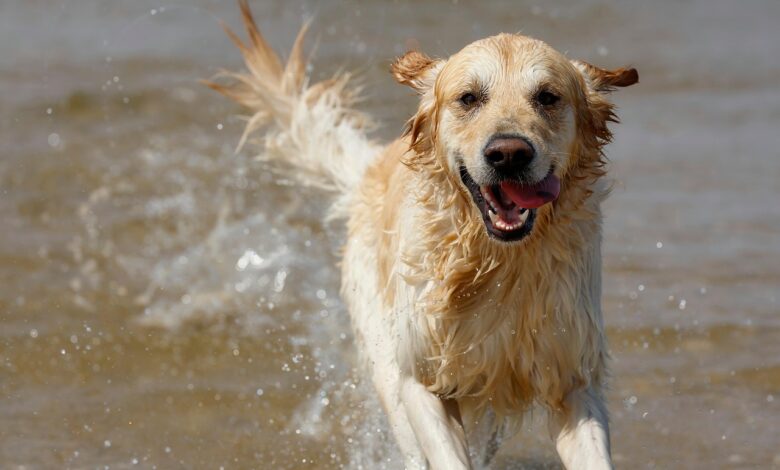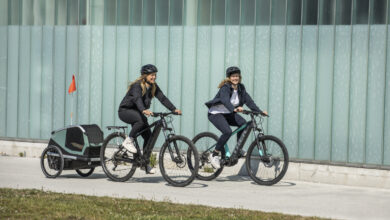How to Keep Your Labrador and Retriever Cool During the Summer
Check out these healthy frozen treat recipes!

Labradors and Retrievers are active, playful, and full of energy, but as the summer heat intensifies, keeping these dogs cool and comfortable is essential for their well-being.
These breeds, known for their thick double coats, are more prone to heat exhaustion and dehydration in hot weather, so it’s important for dog owners to take proactive steps to ensure their furry friends stay safe and cool during the warmer months.
Here, we explore several strategies to help keep your Labrador or Retriever cool in the summer, including cooling products, exercise tips, and refreshing recipes that can help keep them hydrated and comfortable.
Why Labradors and Retrievers Are Prone to Overheating
Labradors and Retrievers, like other dogs with thick double coats, have a layer of insulation that helps protect them from colder temperatures but can be a challenge when the heat rises. This thick coat, which is great for cold weather, can trap heat during the summer months, making it difficult for these dogs to regulate their body temperature effectively. Additionally, they don’t sweat the way humans do; they only sweat through their paw pads, and their primary method of cooling off is through panting.
Overheating can lead to heatstroke, which can be life-threatening if not addressed quickly. Symptoms of heatstroke in dogs include excessive panting, drooling, lethargy, vomiting, and in severe cases, collapse or seizures. Therefore, it is crucial for owners of Labradors and Retrievers to be vigilant about managing their dogs’ temperature during the hot months.
Tips for Keeping Your Labrador or Retriever Cool
Hydration Is Key
One of the most important things you can do to keep your dog cool in summer is to make sure they have constant access to fresh, clean water. Dehydration is a common problem during the hot months, and it can quickly lead to overheating and other health problems. Always carry water with you when walking your dog, especially on warmer days, and ensure they can drink whenever they feel thirsty.
Avoid the Hottest Part of the Day
During the summer months, the sun is usually the hottest between 11 a.m. and 4 p.m. If possible, avoid walking or exercising your Labrador or Retriever during this peak heat period. Opt for early morning or late evening walks when temperatures are cooler. If you must walk during the day, try to find shaded areas or grassy paths that are cooler for your dog to walk on.
Cool Down with Water Play
Labradors and Retrievers love water, and many of them are natural swimmers. A great way to help your dog cool down during the summer is by taking them for a swim in a dog-friendly lake, beach, or river. The cool water will help regulate their body temperature and provide an excellent form of exercise. If swimming isn’t an option, consider setting up a kiddie pool in your backyard where they can splash around and cool off.
Use Cooling Products
There are several cooling products available on the market that can help keep your Labrador or Retriever cool. Cooling mats, vests, and bandanas are designed to absorb heat and provide a cool surface for your dog to rest on. Simply place a cooling mat in your dog’s favourite resting area or use a cooling vest on walks to help regulate their body temperature. Make sure to follow the manufacturer’s instructions for best use.
Trim Their Coat (But Not Too Much)
While it’s important not to shave your dog’s double coat, you can trim it to help them stay cooler. Shaving too much of their coat can remove their natural insulation, leaving them more vulnerable to sunburn. Instead, consider having your dog’s coat professionally groomed with a light trim. Brushing your dog regularly will also help remove any dead hair and allow air to circulate through their coat more effectively.
Provide Shade
When your dog is outdoors during the summer, always ensure they have access to a shaded area where they can relax. Whether it’s a tree, a shaded porch, or an outdoor doghouse, providing a cool and shaded space will allow your dog to escape the sun’s direct heat.
Cooling Recipes to Help Your Labrador or Retriever Beat the Heat
Treats can be a great way to keep your dog cool, and there are plenty of simple recipes you can try at home. Here are some cooling recipes that will help keep your Labrador or Retriever hydrated and refreshed during the summer months:
Frozen Fruit Popsicles
Frozen fruit popsicles are a delicious and refreshing way to cool your dog down. The natural sugars in fruit also provide some energy, making this a perfect treat for after a walk or play session.
Ingredients:
- 1 cup of plain yogurt (unsweetened and unflavoured)
- 1/2 cup of water
- 1/2 cup of fresh fruit (blueberries, strawberries, or watermelon are great options)
Instructions:
- Puree the fruit in a blender with a small amount of water.
- Mix the yogurt and fruit puree together.
- Pour the mixture into silicone moulds or ice cube trays.
- Freeze for at least 3-4 hours or until solid.
- Serve as a refreshing treat to keep your dog cool.
Frozen Broth Treats
If your dog is not a fan of sweets, try frozen broth treats. These savoury ice cubes are a simple way to keep your dog hydrated and cool.
Ingredients:
- 2 cups of low-sodium chicken or beef broth (make sure there’s no onion or garlic)
- 1 tablespoon of fresh parsley (optional for added freshness)
Instructions:
- Pour the broth into ice cube trays.
- If desired, add finely chopped parsley to each cube for extra flavour and a little digestive boost.
- Freeze for several hours until solid.
- Serve as an afternoon treat to help your dog cool off.
Watermelon and Mint Ice Pops
Watermelon is hydrating, and mint has a cooling effect that’s perfect for a hot summer day. This recipe is not only refreshing but also packed with vitamins.
Ingredients:
- 2 cups of watermelon (seeds removed)
- A few fresh mint leaves
- 1/2 cup of coconut water (optional)
Instructions:
- Blend the watermelon and mint leaves until smooth.
- Pour the mixture into ice cube trays or moulds, and if using, add the coconut water for extra hydration.
- Freeze for 3-4 hours.
- Let your dog enjoy this hydrating, cool treat!






